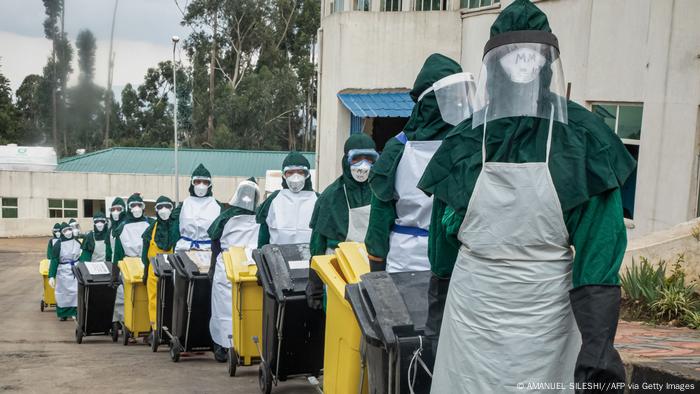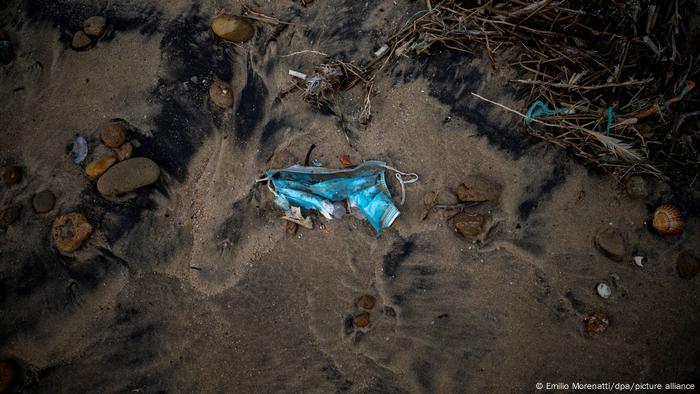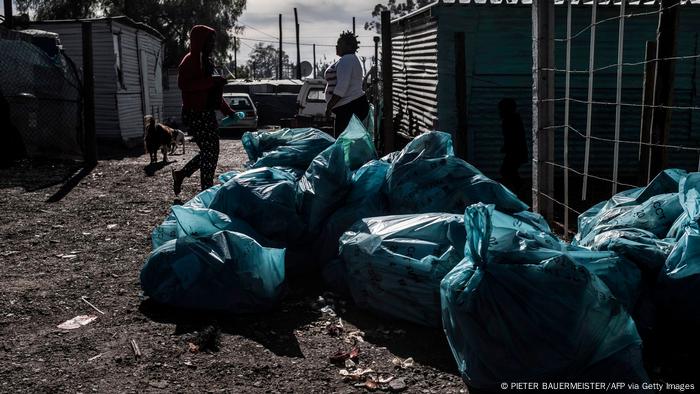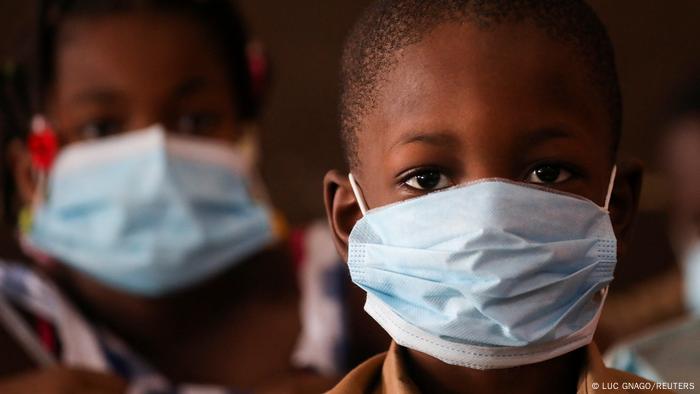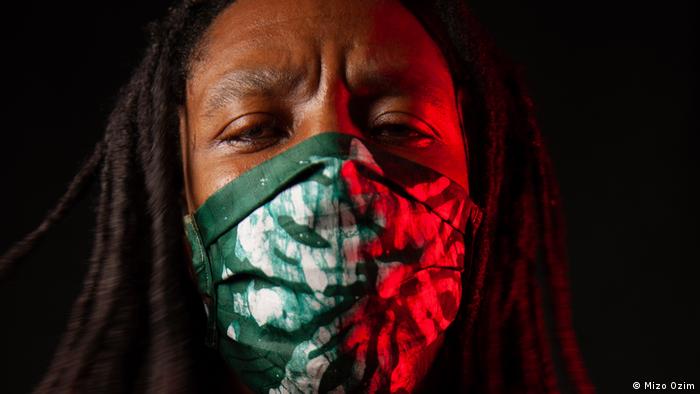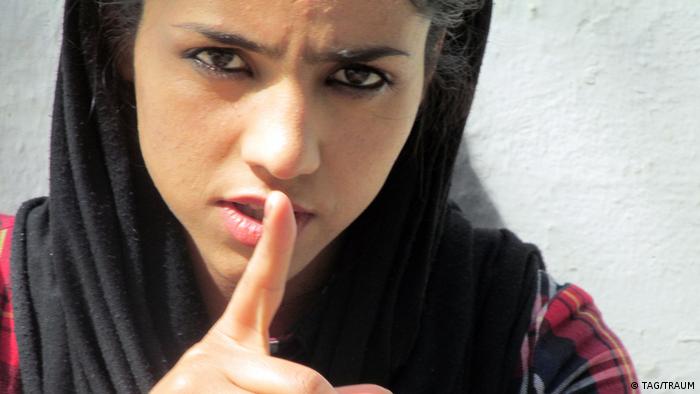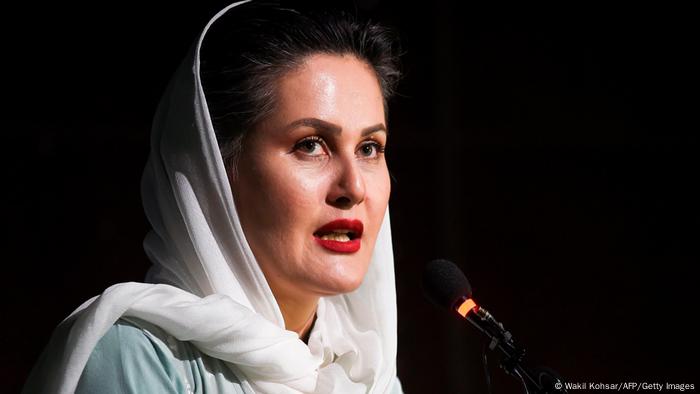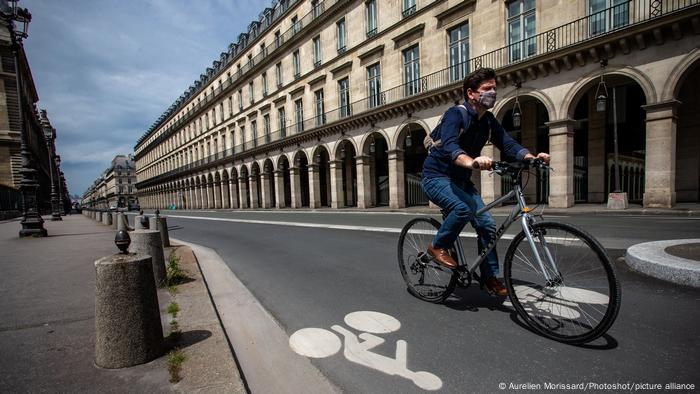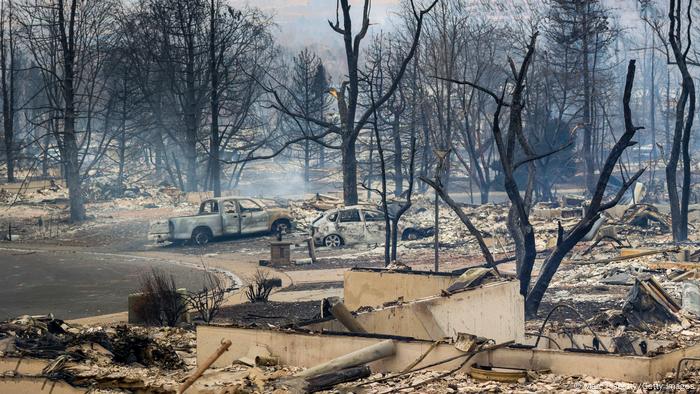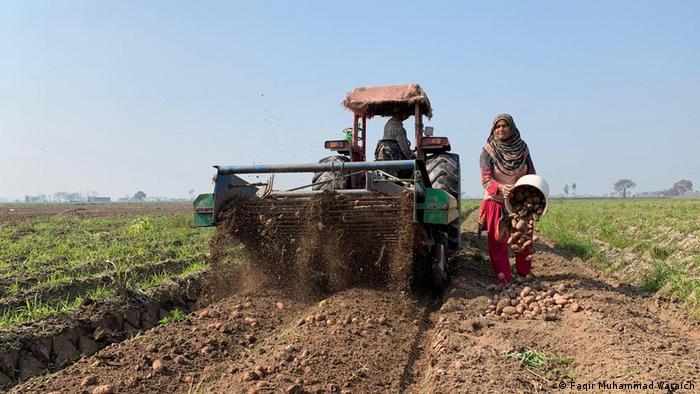In the early 20th century, rags were used to manage periods. Since then, lots of options have been developed to make menstruating far more comfortable. But many across the world are still "on the rag" — literally.
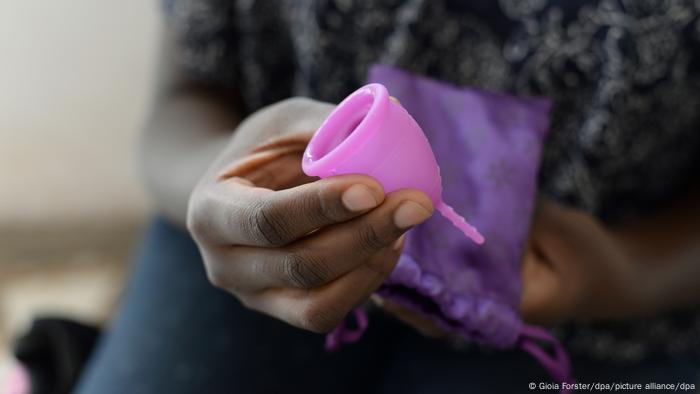
Menstruation cups are expensive, but reusable and better for the environment than disposable pads and tampons
Disposable tampons and pads have become ubiquitous in wealthy countries over the past century, making periods easier to handle.
But although the products are convenient, they are not perfect.
The monthly cost can be unaffordable for people living paycheck-to-paycheck, and the products pile up in landfills, harming the environment — a regular non-organic pad can take 500–800 years to break down, according to UK researchers.
On top of that, improper tampon use can cause toxic shock syndrome, a rare but potentially fatal infection.
Still, for many menstruators across the world, these products are a luxury — if they're even available at all.
Every month, 1.8 billion people menstruate, according to the United Nations Children Fund (UNICEF).
But it's easier for some than others. The high prices, stigma and a lack of access to convenient menstrual products and basic sanitation facilities can even result in young women missing school. Studies show that some girls in Bangladesh, India, Uganda and the UK regularly stay home during their period.
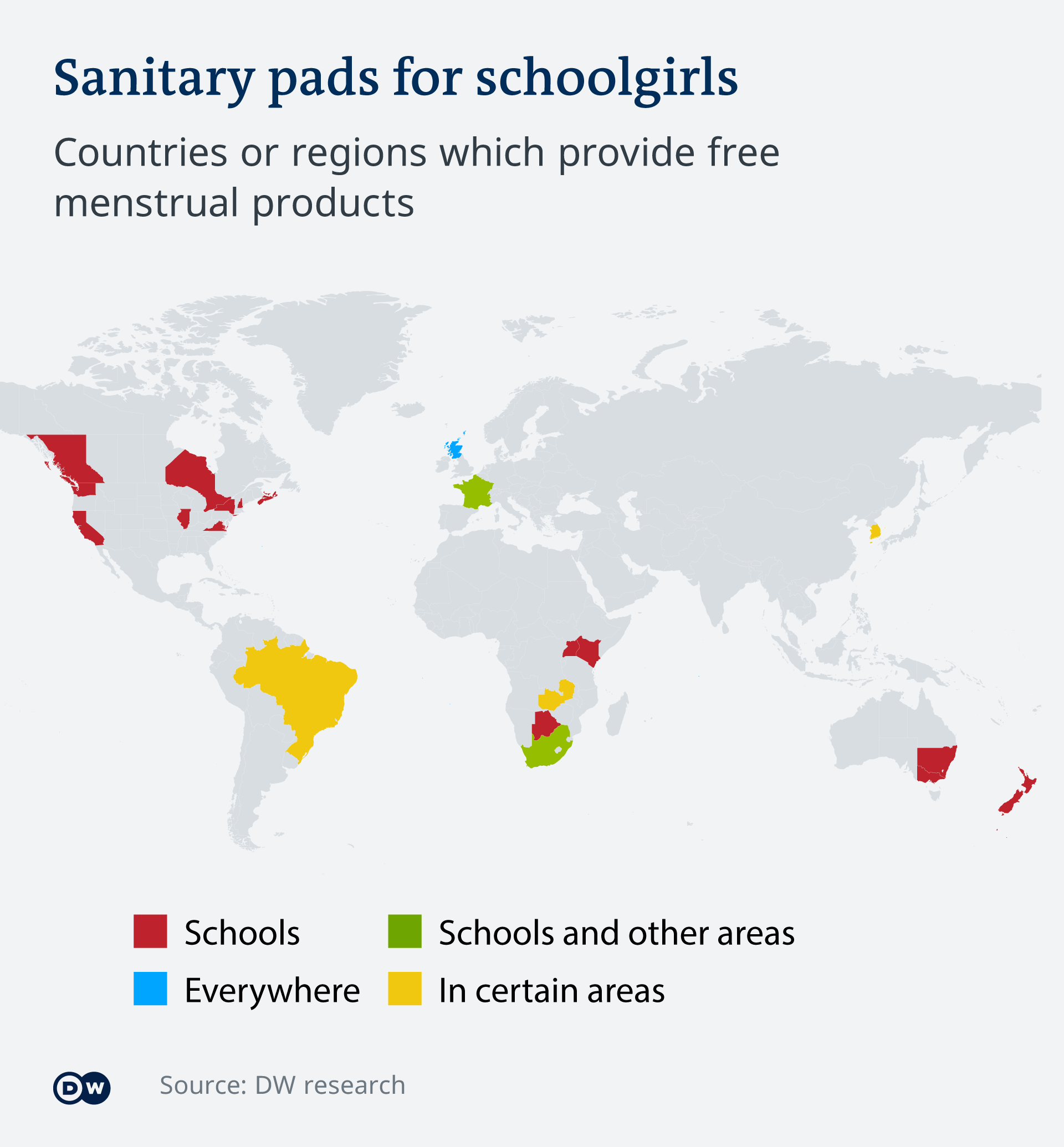
Period products continue to pose financial burdens for menstruators across the world
What are the options?
People disenchanted by disposable tampons and pads can now opt for new alternatives: reusable menstrual cups, period underwear, reusable cloth pads and period discs.
Menstrual cups are one of the most well-known alternatives to disposable period products. They are reusable and can last up to 10 years. The popular DivaCup brand can be worn for 12 hours straight, according to its website, and should be washed with soap and water between uses.
However cups can be expensive (around €26) and must be boiled in hot water, which is inconvenient for those without stable access to water and means to boil it. And like tampons, they can still cause toxic shock syndromeif handled incorrectly, research shows.
Period underwear, although good for backup, typically don’t work on their own and are prone to leakage, review websites say. They're also expensive: if a person wants to wear them throughout the course of their period without doing laundry everyday, they'll have to buy at least three or four pairs. This might save money in the long term, but can be a big cost upfront.
Period discs are inserted like menstrual cups, but like tampons, they are disposable. Unlike the cup or tampons, the disc sits near the cervix and catches blood before it enters the vaginal canal, making it possible to have mess-free sex. So far, there haven't been any reported cases linking disc use to toxic shock syndrome.
What to avoid
When people have the luxury to choose between multiple options for period management, the "right" method is the one that works best for them — within reason, experts say.
"Sea sponge" tampons — made from either real or synthetic sea sponge — have been lauded by many women's health websites as a natural and sustainable alternative to cotton tampons. But these and other tampon "hacks" shouldn't be used, says Jen Gunter, a Canadian obstetrician-gynecologist who writes a monthly column about women’s health for the New York Times.
Gunter said sponges should be avoided because there is no way to clean them, which means they can introduce foreign bacteria into the vagina. And their rough surface can cause abrasions in the vaginal wall that are too small to notice, but large enough for bacteria to enter through.
The size of the sponge could also cause abrasions, she said, because it expands horizontally rather than vertically, like a tampon. This could become a problem during the removal process, she wrote.
Menstrual sponges examined in 1980 were found to contain sand, grit, bacteria, and various other materials, according to a US Food and Drug Administration guidance paper. One sample was confirmed to contain Staphylococcus aureus, it said.
Most sponges were voluntarily recalled by distributors after the FDA examination. But the sponges are still sold online by companies such as "Jade and Pearl."
Regulators found that toxic shock syndrome was associated more with high-absorbency tampons and tampons from the brand Rely, which were pulled from the market in 1980.
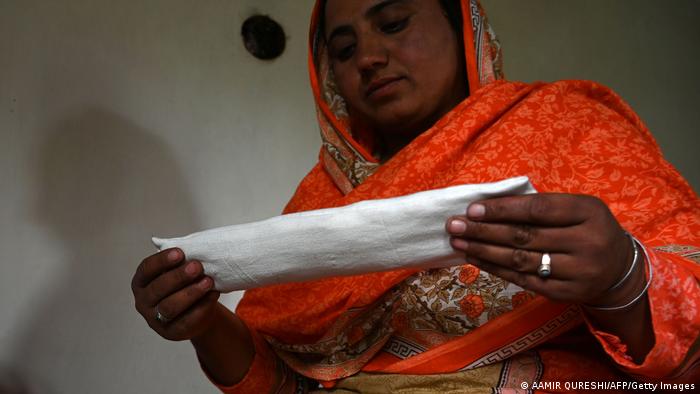
Many people across the world use homemade reusable pads to deal with menstruation.
While menstruators in the US use pads nearly as often as tampons, in Europe more stick with tampons.
Cotton tampons biodegrade much quicker, in around six months. However the plastic applicators and wrappers that come with most tampons in the US take much longer.
In Europe, tampons are typically sold without applicators or wrappers and come in cardboard packaging, which reduces waste.
In other parts of the world, tampons are rarely used. This is sometimes for cultural reasons — in some places they are seen as impure, damaging a woman's virginity — and more often for economic reasons, studies show.
Many across the world — in Zambia, Sudan, Ethiopia, for example — still use old rags, cotton or cloth to absorb their periods because they can't afford or don't have access to disposable period products.
A 2015 study in South Sudan found just 17% of girls surveyed reported using commercial disposable sanitary pads. The rest used pieces of old cloth, goat skin, or nothing. Around 17% of the girls surveyed said they dig small holes to menstruate, which they later cover with soil, the study said.
In Ethiopia, Zimbabwe, and Tanzania, less than a quarter of girls reported using disposable pads to manage their period. The rest use a combination of cloth, cotton and toilet paper, according to the study.
Some in Nepal "free bleed" in menstruation huts each month. Although this practice, called "chhaupadi", is illegal, many still practice it . A 2019 survey showed that among 400 adolescent girls in villages in midwestern Nepal, 77% practiced chhaupadi even though 60% knew it was against the law.
Menstrual cups and reusable pads like the Afripad have been distributed in places where access to period products is scarce, like Ethiopia, where women use cotton or cloth to absorb their periods. But these options don't address the other period-related problems some of these women face, like lack of access to clean water or a toilet at home.
Editor: Louisa Wright
DW RECOMMENDS
Turkish women protest: 'Sanitary products are not a luxury'
For months, the "Campus Witches" of Turkey have protested against the rising cost of sanitary products, which they say should be free. For many of their compatriots, the subject of menstruation remains taboo.
Indian schoolgirls dropping out during puberty
Young girls in India menstruating for the first time are considered impure and are excluded from social life. Tradition dictates they are not allowed into the family home and many are forced to stop going to school.
Virginity and menstruation myths behind Asia's tampon taboo
In a region where many communities chastise unmarried women for not being "virgins," tampons, believed by some to cause hymen breakage, are still rare.
Laura Philipp: Pioneering menstrual training
The female economic factor



